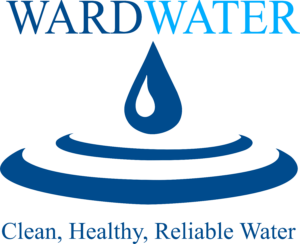Arsenic in Rice
Arsenic in Rice was a very big topic in 2012.
For years now we’ve been told that consuming brown rice was far better for us than eating white rice. But this past September the FDA released results from a 20 year study sampling Arsenic levels of nearly 200 different kinds of rice and rice products.
Turns out, their findings for brown rice samples contained some of the highest levels of Arsenic out there.
Is there still a way to eat rice without worrying about Arsenic? Let’s take a look at 5 simple ways you may be able to have your rice and eat it too!
Where does Arsenic Come From?
Organic Arsenic
Arsenic is natural organic element. It can be found underground in both soil and bedrock. Once that soil or bedrock is contacted by water sources, that same Arsenic can be carried into private water supplies as well as into the irrigation water used in farming practices.
 Inorganic Arsenic
Inorganic Arsenic
Arsenic can also be used inorganically, for industrial purposes like metal production, wood preservatives and in agricultural products such as many of the fertilizers used for farming crops.
Plants are like a Sponge
It’s really not a surprise that we find arsenic in rice. Just about any food crop grown in or on the ground will absorb elements from the soil or through the water that irrigates those crops. Rice is definitely no exception.
Why is Arsenic in Rice?
According to Dr. Peter Knight, Doctor of Naturopathic Medicine at Healthy Living Health Care, rice is one of the only major crops today that’s grown in fields that are flooded with water.
“Rice appears to absorb arsenic from soil or water better than other crops (a
reason it has been effective for removing toxins from the body). It is also one of the only major crops that is grown in water flooded fields. If the water that is being used for irrigation has arsenic in it and the soil has arsenic in it, the rice is being set up to absorb high levels of this toxin.”
One thing to keep in mind; as of now there have been no health standards set by the EPA for acceptable Arsenic levels found in food, like the ones set for drinking water consumption.
What does this mean to you? You have to take control of knowing exactly
what’s in the food your family eats in addition to the water used for drinking & cooking. It is my personal belief that a great deal of good health comes down to having a little bit of knowledge and using a whole bunch of good old common sense.
Reducing the Risk of Arsenic in Rice
The following, is summarized from Dr. Knights recent article on Arsenic in Rice. These are 5 simple steps you can take to still obtain the health benefits of eating rice (especially brown rice), while reducing the risk for Arsenic intake.
- Test your water. As water treatment professionals we give this advice often enough that we probably sound like a broken record. In addition to the pitfalls of drinking water high in Arsenic, if the water you are using for cooking has elevated levels of Arsenic all of the foods you are cooking can end up with even greater levels of Arsenic contaminant…especially rice!
- Limit your rice intake. Try and consume no more than 3 total serings of rice or rice made products per week. This includes rice based foods such as, milk, pasta, cereals, syrups and flours.
- Rinse, Rinse, Rinse. Before cooking your rice, make sure to rinse it thoroughly. Also, try a different cooking approach by boiling it more like you would do when cooking pasta. Try adding 1 cup of rice to 6 cups of already boiling water. Boil it until it becomes tender. The downside is that it will decrease nutrient content. the upside: it also drastically reduces the Arsenic content.
- Think West Coast. California grown rice crops typically have lower contents of Arsenic when compared to those grown in the southern part of the country. If at all possible, purchase those rice you know for a fact have been grown in California.
- Vary your grains. Sometimes a little creativity and originality can go a long way. Today there a lot of tasty and healthy grain alternatives on the market that are also lower in Arsenic. Quinoa, millet, buckwheat and amaranth can all be used as great a break in routine from the same old, same old rice diet routine.
Additional Resources
FDA Arsenic Summary Results for rice and rice products







